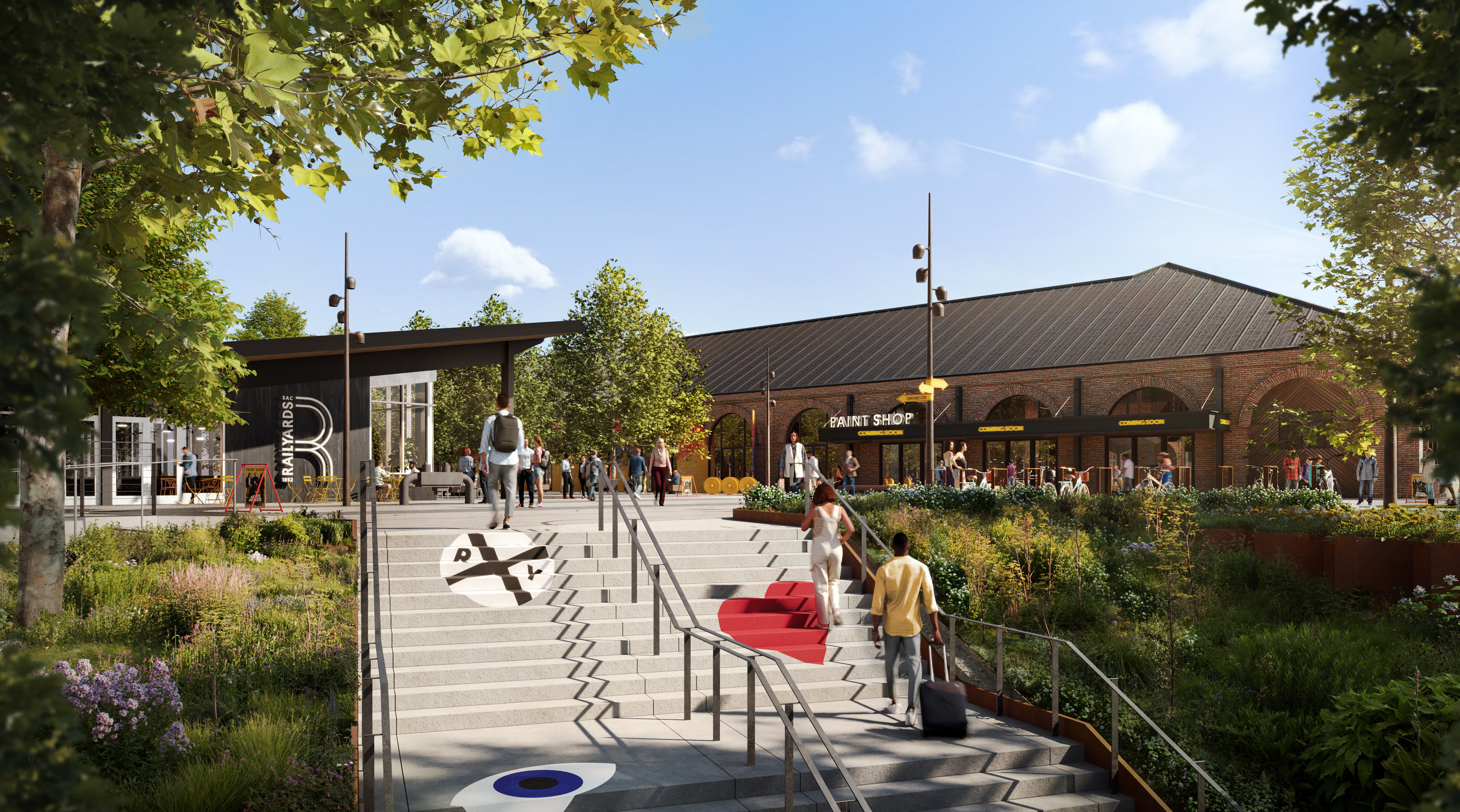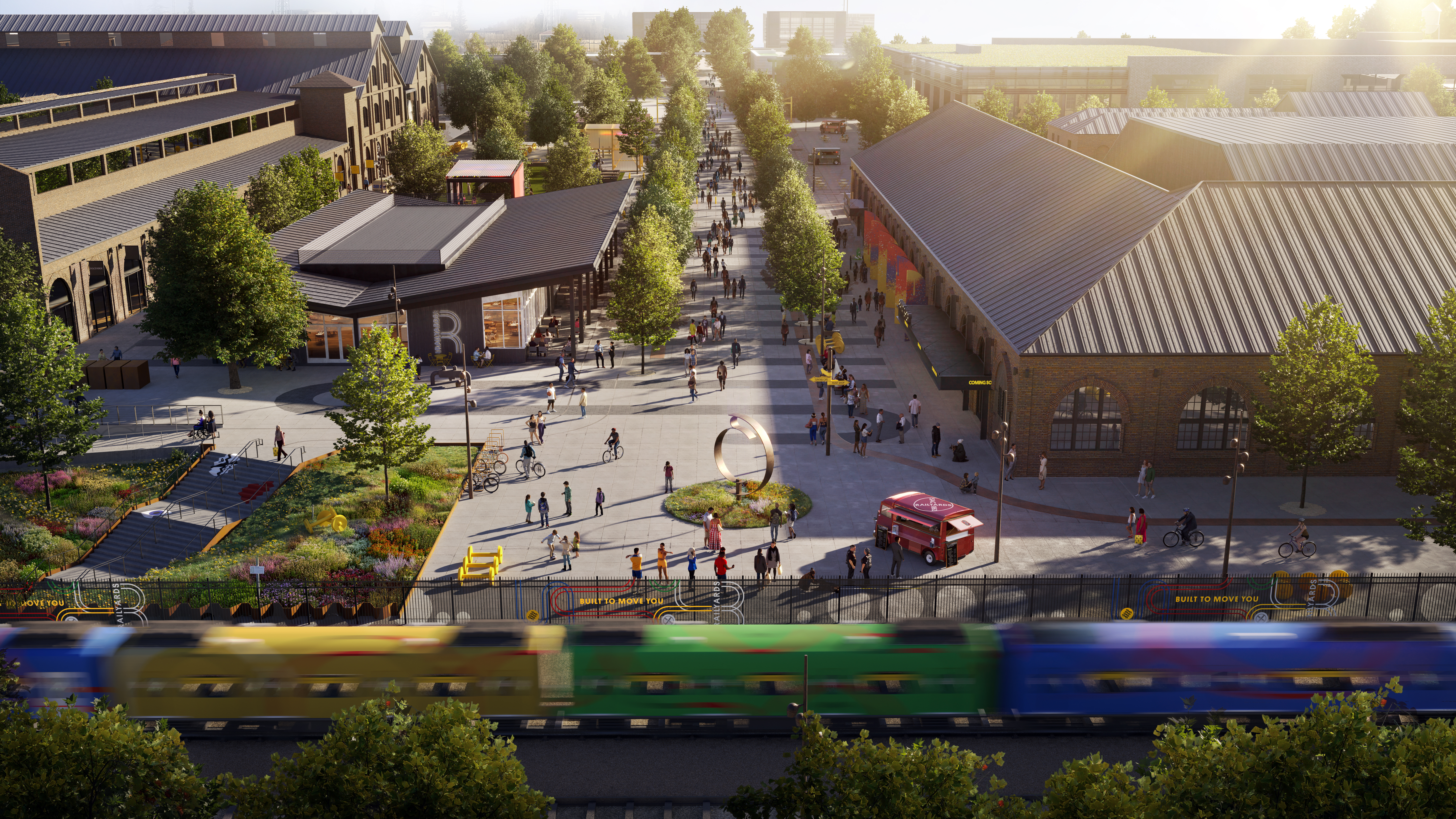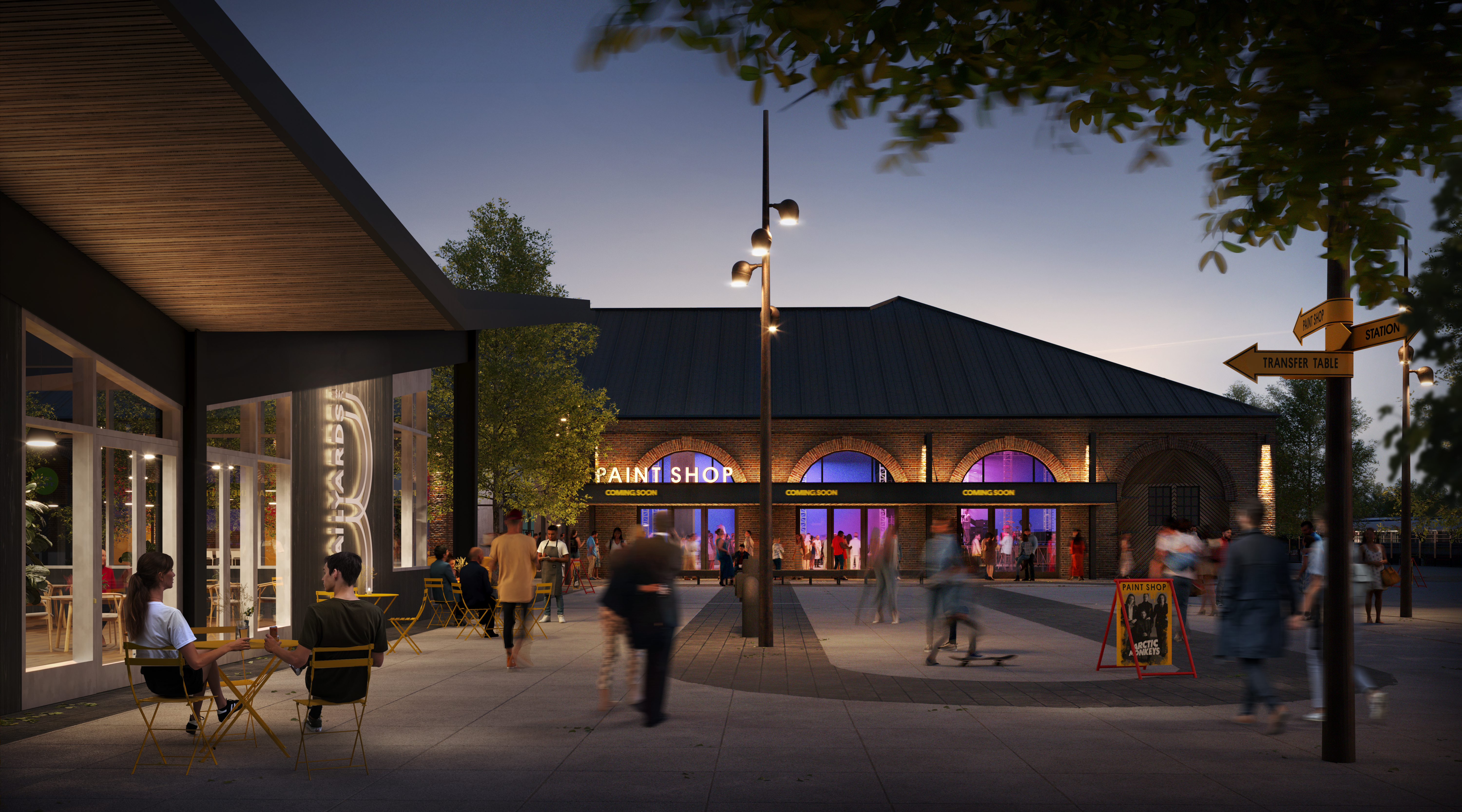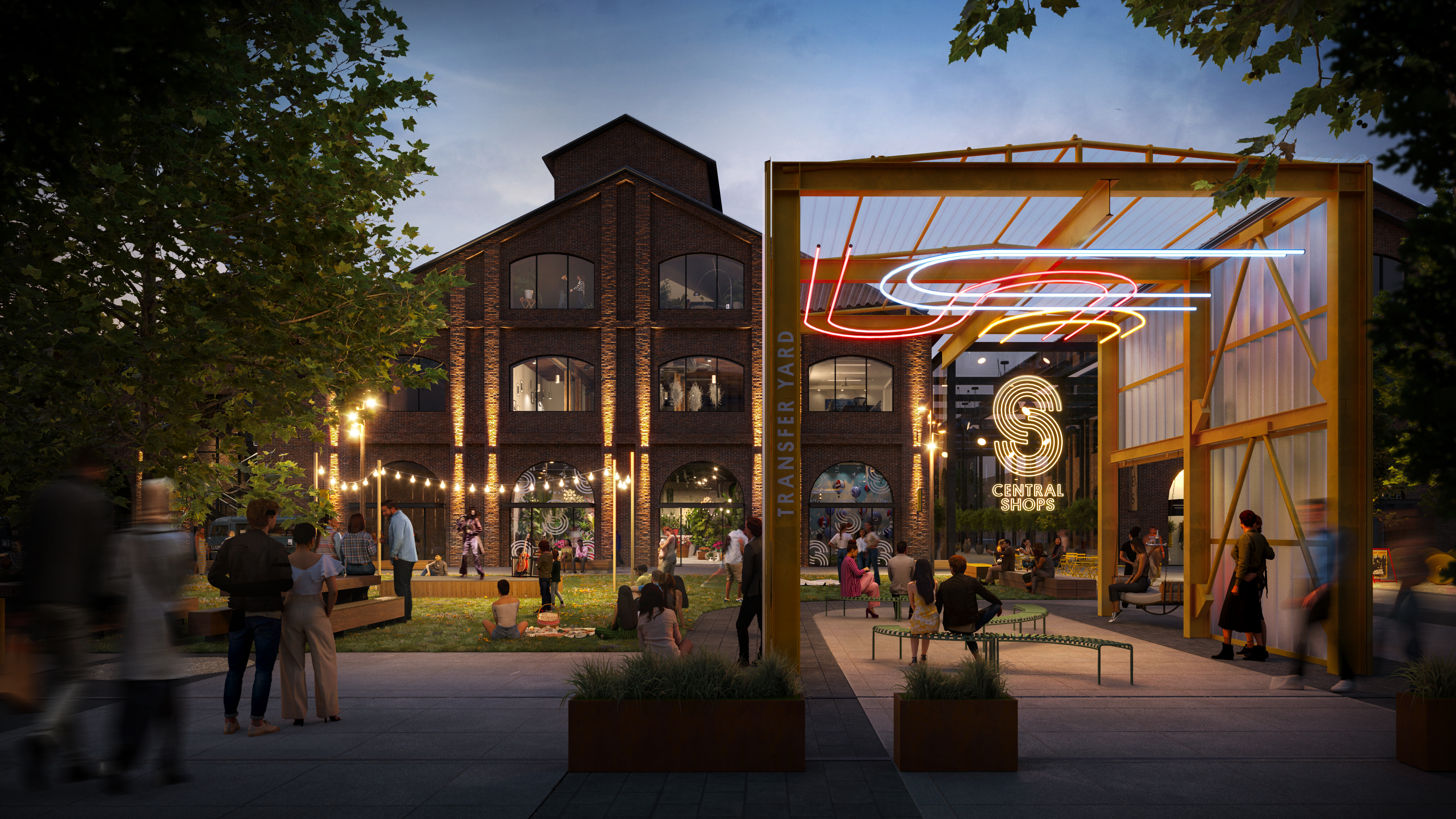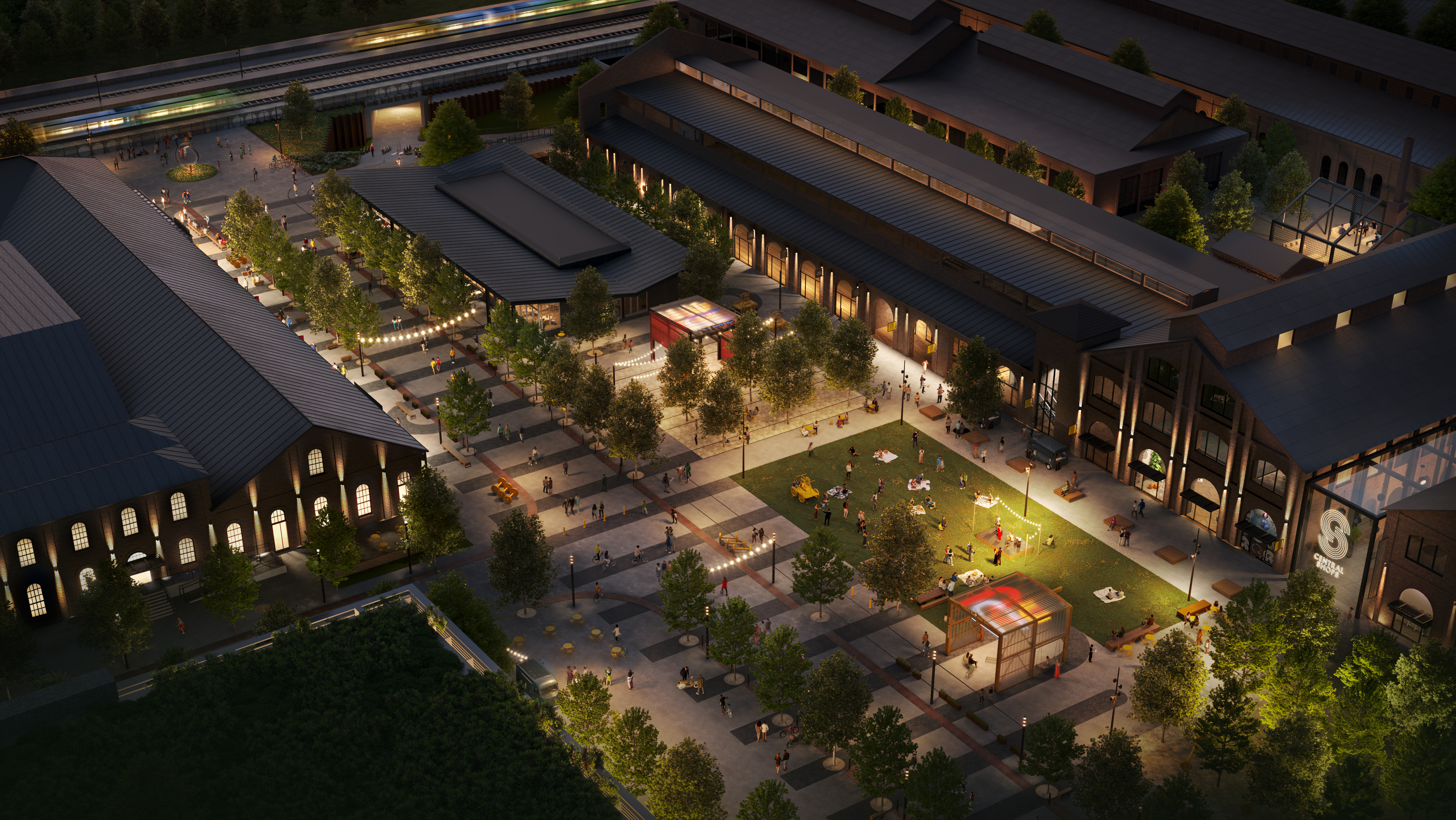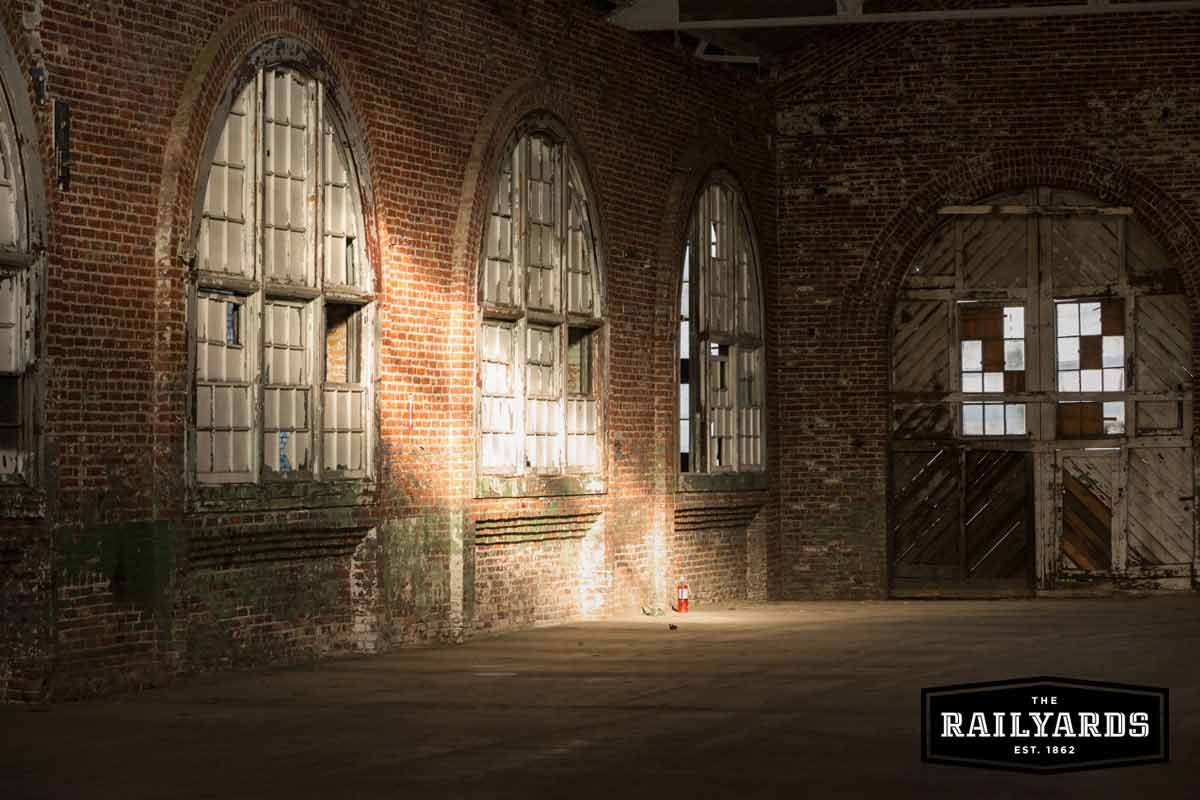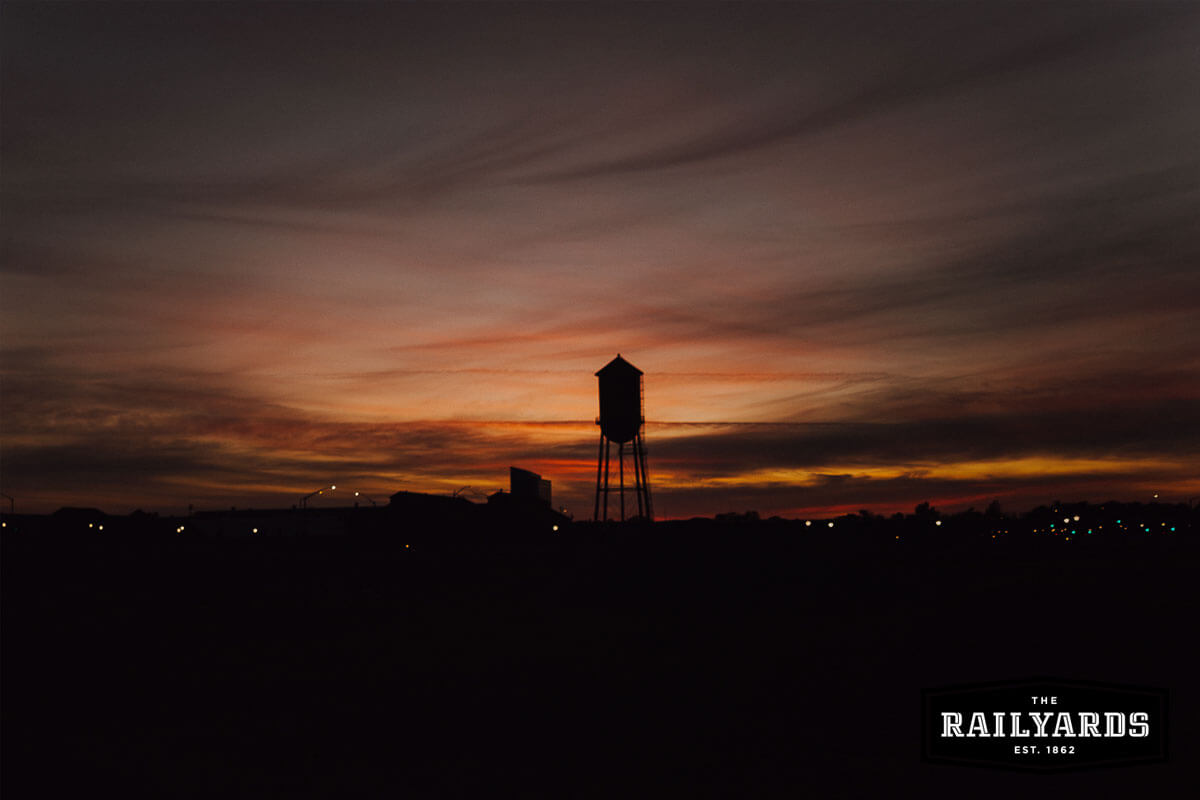
August 11, 2017 / Author: the Railyards
Discover the story behind the Railyards historic water tower and the role it played in the continued operations of the Sacramento shop yards.
A water tower stands tall against the Sacramento sky. At first glance it appears like any other relic from a bygone era - an unassuming steel structure weathered by time and seasoned by rust and graffiti. But this is more than an abandoned water tower; it’s a historic Sacramento landmark. Its 100K-gallon tank now filled with memories of a time when the railyards and rail shops in Sacramento were a thriving operation, supporting thousands of jobs in the region and helping to transport California’s prize agriculture all over the country by rail.
This is the story of the Sacramento Railyards historic water tower.
Expansion, Growth, and Innovation: the Railyards Shop Yards
On January 8, 1863 a groundbreaking ceremony was held in Sacramento as the Central Pacific Railroad began laying the first tracks that would reach from Sacramento east across the Sierra Nevada as part of Abraham Lincoln’s Pacific Railway Act, which aimed to construct the first transcontinental railroad from the Missouri River to the Pacific ocean.
The Central Pacific (CPRR) quickly established a shop yard at its Sacramento headquarters to manufacture its own rail cars instead of shipping them from the east coast. The first frame building measured 250 by 150 feet and employed less than a dozen workers. In these early days, the Sacramento shops grew to five buildings used for materials storage, car repair, a locomotive shop and one building for new car construction.
In 1867 a new shop yard was completed on 30-acres of swampland north of Downtown Sacramento. Over the next couple of decades the Sacramento shop yard became the largest industrial complex west of the Mississippi River; by the 1930s the Sacramento shop yards had grown to their current size of approximately 200-acres.
Over the years nearly 200 locomotives were manufactured at the Sacramento shop yards until the last Sacramento built steam locomotive rolled out in 1937. At its height, the Sacramento shop yards consisted of more than 90 buildings.
Only eight now remain.
From 1910 through the 1930s, Sacramento - the “Steel City” - doubled in size. The Southern Pacific Railroad (formerly the CPRR) was the local economy’s largest employer. More than 3,000 people were employed at the Sacramento shop yards. The SPRR produced an average of 15 locomotives, repaired around 350 locomotives and 800 passenger cars annually.
Fires in the Railyards
Since its inception, the railyard suffered from devastating unpredictable fires that quickly spread and lead to great destruction. Fires would destroy buildings, equipment, supplies, and patterns (blueprints). Employees had to be diligent about cleaning and maintaining the buildings and enforcing fire safety rules.
By the late 19th century the shop yard had its own fire department, complete with inspectors, inspection guidelines, and equipment. A destructive fire in 1898 destroyed the Car Machine shop and Planing Mill and highlighted the system’s inadequacies - including mud in the water supply that diminished water pressure and flow. Fire hydrants weren’t capable of connecting to Sacramento Fire Department hoses.
A subsequent fire in 1916 was equally disastrous.
Employees continually rebuilt destroyed structures using the latest building technology and materials, but the most successful solution to these devastating fires came in the form of the water tower that still stands at the Railyards today.
A Water Tower for the Railyards
In 1931 a 100-gallon water tower was constructed in the Sacramento shop yard. The water tower was designed and manufactured by Chicago Bridge & Iron Works, a Chicago based company that originally focused on bridge design and construction but soon realized the need for high-capacity liquid storage containers in the oil and railroad industries.
CB&I quickly gained a reputation for engineering elevated water storage tanks. By 1894, CB&I became the dominant manufacturer of water towers in the US. They were the first to construct a water tower with a hemispherical bottom and by 1905 the all-steel tank with hemispherical bottom was the dominant type found in the US. By the time the water tower was constructed at the Sacramento shop yard in the early 30s, steel water towers with vertical shafts and hemispherical bottoms had been erected throughout the American landscape for several decades.
The Railyards water tower held a tremendous amount of pressurized water that provided a constant water supply for the operation as well as the shop yard’s internal fire department.
Maps of the Sacramento shop yards in the 1960s indicate that the water tower stood in a parking lot bordered by the fire house and central power plant to the west and long linear storage buildings to the north.
The water tower is one of the few remaining structures that still stands after the shop yard was closed down in 1999, after 130 years of operation.
The city council listed the Sacramento Railyards water tower on the Sacramento Register as a historic landmark, finding that “the Water Tower is associated with events that have made a significant contribution to the broad patterns of the history of the city… With its large storage capacity the Water Tower delivered a constant and reliable source of water used throughout the facility daily and and during emergencies such as fires. In turn, this allowed the Sacramento shop yard to run continually and efficiently and its employees to manufacture, maintain, and repair steam locomotives and rail cars that contributed greatly to the local, state, and national economy.”
The shop yards played an important role in US and California history, and the water tower played a critical role in keeping the shop yards operating and standing for decades. Without the water tower, the shops may have fallen to fire and the livelihood (and lives) of thousands of Sacramento residents may have perished. Today, the water tower still stands tall for all to see; a reminder of the rich history of the Sacramento yards and all of its dangers, perils, innovation, and celebration.
Water Tower image courtesy of Vicky Thompson.


